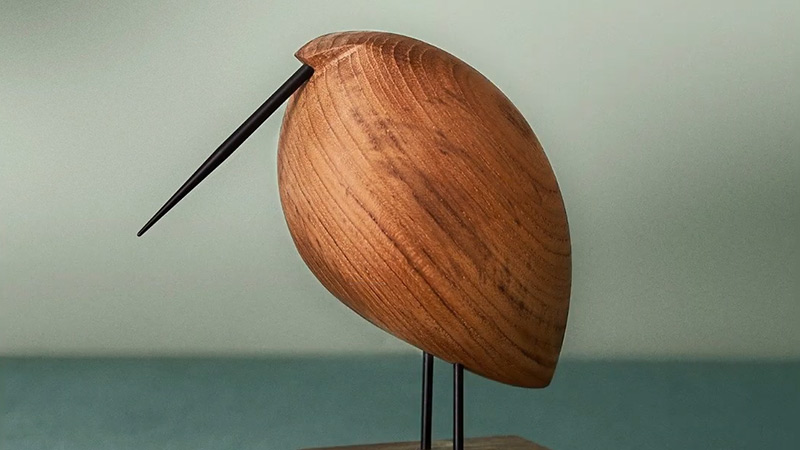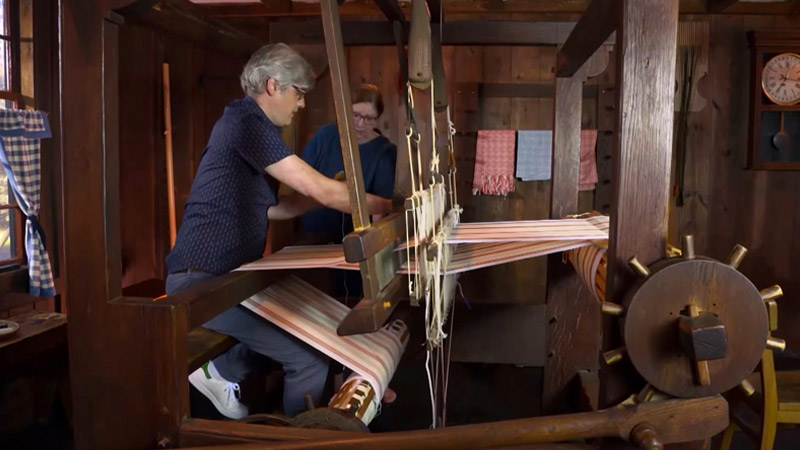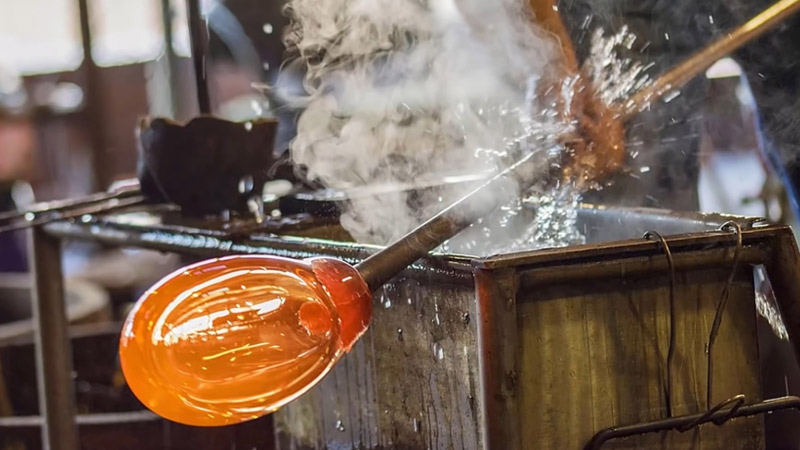Wood, with its natural charm and versatility, has been a cornerstone of craftsmanship throughout human history.
From intricately carved sculptures to functional furniture, the timeless allure of wood as a craft material remains unmatched. This enduring popularity begs the question: why is wood such a popular craft material?
Beyond its aesthetic appeal, wood offers a unique set of qualities that make it an ideal medium for artisans and hobbyists alike.
In this exploration, we delve into the intrinsic characteristics of wood, its cultural significance, and the tactile satisfaction it provides.
Join us on a journey through the grains and knots of this exceptional material, as we unravel the secrets behind its enduring popularity in the realm of creativity and craftsmanship.
As we peel back the layers of history, we discover that wood not only serves as a medium of expression but also carries a rich legacy.

Why Is Wood Such A Popular Craft Material?
At its core, wood’s popularity as a craft material is anchored in its versatility. Its natural grain patterns and varied hues offer a visually appealing canvas for wood hobby workers, allowing for a broad spectrum of artistic expressions.
Wood is a popular craft material because of the following reasons:
Cultural Significance: Heritage and Tradition
Beyond its aesthetic charm, wood carries a significant cultural weight that transcends generations. Many societies have a rich history of woodworking, with traditions passed down through families or master-apprentice relationships.
This cultural connection adds depth to each crafted piece, infusing it with a sense of heritage and time-honored skill.
The Tactile Experience: Crafting with Connection
The tactile experience of working with wood is a crucial factor in its enduring popularity. Craftsmen appreciate the physical connection with their materials, from the resistance of the grain under a chisel to the smooth finish achieved through sanding.
This hands-on approach fosters a deep connection between the creator and the creation, adding a layer of satisfaction that extends beyond the finished product.
Sustainability: Wood as a Responsible Choice
Wood’s sustainability plays a crucial role in its popularity, aligning with modern concerns about environmental impact. Responsibly sourced wood, as a renewable resource, enhances its appeal in the contemporary crafting landscape.
Craftsmen and consumers alike are drawn to materials that tread lightly on the planet, further highlighting wood’s environmentally conscious reputation.
Historical Significance: Weaving Stories Through Wood

The historical significance of wood in various cultures contributes to its enduring popularity. From ancient woodworking traditions in China to the intricate carvings of Scandinavian folk art, wood has been a medium for cultural expression and storytelling.
Its use in constructing buildings, tools, and art has been central to the development of civilizations, creating a rich tapestry of human history woven with wooden threads.
Durability and Practicality: Craft Wood for Longevity
Wood’s resilience and durability make it a practical choice for crafting. Well-treated wood can withstand the test of time, gaining character and patina as it ages.
This durability not only adds value to crafted pieces but also reduces the environmental impact by promoting long-term use and reuse.
Artisanal Touch: Handcrafted Excellence
In a world dominated by mass-produced goods, the craftsmanship associated with wood offers a unique counterpoint. Handmade wooden items bear the marks of individual skill and attention to detail, standing in contrast to the uniformity of factory-produced alternatives.
This artisanal touch contributes to the emotional connection people often develop with handmade wooden objects, turning them into cherished heirlooms.
Adaptability: Tradition Meets Innovation
Wood’s adaptability to various crafting techniques ensures its relevance in both traditional and contemporary settings.
While traditional woodworking methods continue to be cherished, modern technologies such as laser cutting, CNC machining, and 3D carving techniques open new avenues for artistic expression.
This adaptability attracts a diverse community of craftsmen who blend tradition with innovation.
Tangible Authenticity in a Digital Age
Amid the digital age, the desire for tangible, authentic experiences has grown. Wood, with its natural and organic qualities, provides a counterbalance to the virtual world.
The scent of freshly cut wood, the feel of its grain, and the warmth it brings to space create a multisensory experience that resonates with those seeking a connection to the physical world.
What Is the Most Common Way to Shape a Hollow Glass Vessel?
The most common way to shape a hollow glass vessel is by: glassblowing. This intricate and skillful technique has been practiced for centuries, evolving from its origins to become a cornerstone in the world of glass artistry.
Origins and Evolution of Glassblowing: A Historical Perspective

Glassblowing has a rich history dating back to the first century BCE, believed to have originated in the Roman Empire.
This revolutionary technique allowed artisans to create hollow glass objects with unprecedented speed and precision compared to previous methods.
Over time, the art of glassblowing spread across cultures and continents, adapting and evolving into the diverse and sophisticated craft we know today.
The Glassblowing Process: From Furnace to Masterpiece
The glassblowing process begins with a gathering, where a skilled glassblower collects molten glass on the end of a blowpipe from a furnace operating at extreme temperatures.
The artist then shapes and inflates the glass bubble using various tools, such as wet newspaper pads and wooden blocks. This early stage sets the foundation for the vessel’s form.
Shaping the Glass: Tools of the Trade
Glassblowers employ an array of specialized tools to shape the molten glass. Marvers, which are flat surfaces often made of steel or graphite, help shape and cool the glass.
Jacks, resembling large tweezers, are used to manipulate and define the vessel’s neck and body. The blowpipe itself, a fundamental tool, allows the glassblower to control the size and shape of the piece.
Adding Color and Texture: A Creative Touch

To enhance the visual appeal of the glass vessel, artists often introduce color and texture during the glassblowing process. Colored glass shards or powders can be applied to the molten glass, creating vibrant patterns and designs.
Additionally, various techniques such as twisting, fritting, and cane work can add texture and intricate detailing to the finished piece.
The Crucial Role of the Annealing Process
Once the desired shape and design are achieved, the glass vessel undergoes a crucial step known as annealing. This process involves carefully cooling the glass at a controlled rate in a kiln to relieve internal stresses.
Annealing ensures the structural integrity of the vessel, preventing it from cracking or shattering due to temperature variations.
Specialized Glassblowing Techniques: Beyond the Basics
While the basic principles of glassblowing remain consistent, artisans often explore specialized techniques to push the boundaries of their craft.
Double-walled vessels, for instance, involve creating an outer layer and an inner layer of glass, each shaped separately before being joined. This technique adds complexity and visual interest to the final piece.
Collaborative Glassblowing: Mastering Teamwork
Glassblowing is often a collaborative effort, with multiple artisans working seamlessly to create a single piece. Teamwork is essential, especially for larger and more intricate vessels.
Each team member plays a specific role, from the gaffer who oversees the entire process to the assistants who handle specific tasks, such as reheating the glass or adding color.
Contemporary Innovations: Pushing Boundaries
In the modern era, glass artists continue to innovate and experiment with the traditional glassblowing process.
Some incorporate advanced technologies, such as computer-controlled kilns and precision molds, to achieve intricate and consistent results.
Contemporary glassblowers also explore unconventional shapes and sizes, pushing the boundaries of what is traditionally associated with glass vessels.
Challenges and Mastery: The Artisan’s Journey
Glassblowing is a challenging and demanding art form that requires years of practice and mastery. Controlling the temperature, understanding the behavior of molten glass, and maintaining precision throughout the shaping process are skills honed through experience.
The journey from novice to master glassblower is marked by countless hours at the furnace, refining techniques, and developing a deep understanding of the medium.
FAQs
What makes wood stand out among other craft materials?
Wood stands out due to its unique combination of aesthetic appeal, cultural significance, and sustainability. Its versatility allows artisans to create anything from intricate sculptures to practical furniture, making it a favorite across various crafting disciplines.
How does the cultural significance of wood contribute to its popularity?
Wood carries cultural significance in many societies, often rooted in traditions passed down through generations. This historical connection adds depth and meaning to crafted items, making them not just objects but carriers of heritage and craftsmanship.
Is wood a sustainable choice for crafting?
Yes, responsibly sourced wood is a sustainable choice. As a renewable resource, it aligns with growing environmental concerns. Crafters and consumers increasingly value materials that have a lower impact on the planet, making wood an eco-friendly option in the crafting world.
What role does the tactile experience play in wood crafting?
The tactile experience is crucial in wood crafting. Craftsmen enjoy the physical connection with the material, feeling the resistance of the grain and achieving a smooth finish through hands-on processes. This sensory engagement adds a layer of satisfaction to the crafting experience.
How does wood’s durability contribute to its popularity in crafting?
Wood’s durability makes it a practical choice for crafting. Well-treated wood can withstand the test of time, gaining character and patina as it ages. This longevity not only adds value to crafted pieces but also aligns with the desire for long-lasting, sustainable creations.
Conclusion
The enduring popularity of wood as a craft material transcends mere aesthetics, reaching into the heart of human creativity.
Its innate warmth and organic beauty foster a connection between artisans and their creations, while its versatility allows for a wide range of expressions from rustic simplicity to intricate elegance.
Wood’s cultural significance, deeply embedded in traditions worldwide, adds a layer of timelessness to every crafted piece. The tactile satisfaction derived from working with wood further cements its status as a beloved medium for creators.
As we reflect on the grains and knots explored in this journey, it becomes clear that wood, with its storied past and limitless potential, remains an evergreen choice for those who seek to infuse their craftsmanship with a touch of nature’s artistry.
In essence, wood stands not just as a material, but as a testament to the enduring marriage of human creativity.
Leave a Reply